An Interview With Dark Horse Manga Editor Carl Horn
Feb 24, 2014
 Dark Horse was one of the early adopters of Manga. Founder and President Mike Richardson had a strong interest in manga and jumped ahead of market trends by publishing Dark Horse’s first manga series, Godzilla: King of the Monsters, in 1987. More manga series followed, and by the early ’90s, Richardson was traveling regularly to Japan, cultivating strong relationships with top creative talent there resulting in a powerhouse manga program. In 2010, Dark Horse began a partnership with superstar Japanese manga collective, CLAMP, publishing such best-selling titles as Clover, Chobits, and Magic Knight Rayearth.
Dark Horse was one of the early adopters of Manga. Founder and President Mike Richardson had a strong interest in manga and jumped ahead of market trends by publishing Dark Horse’s first manga series, Godzilla: King of the Monsters, in 1987. More manga series followed, and by the early ’90s, Richardson was traveling regularly to Japan, cultivating strong relationships with top creative talent there resulting in a powerhouse manga program. In 2010, Dark Horse began a partnership with superstar Japanese manga collective, CLAMP, publishing such best-selling titles as Clover, Chobits, and Magic Knight Rayearth.
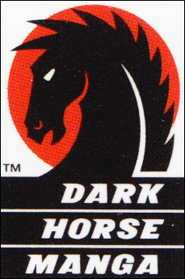 And today in 2014, Dark Horse continues to innovate in the field of Manga. Under the stewardship of Editor Carl Horn, Dark Horse continues to bring the best in manga entertainment to Western audiences.
And today in 2014, Dark Horse continues to innovate in the field of Manga. Under the stewardship of Editor Carl Horn, Dark Horse continues to bring the best in manga entertainment to Western audiences.
For Manga Month, Dark Horse has two big projects set to premiere in May of this year: Hatsune Miku: Unofficial Hatsune Mix and Dragon Girl and Monkey King: The Art of Katsuya Terada. We conducted a short interview with Mr. Horn about these exciting new projects and what new treats lie in store for us at Dark Horse Manga.
**********
PREVIEWSworld (P): 2014 is looking like another banner year for Dark Horse and Manga! What kind of planning goes into a year’s worth of releases?
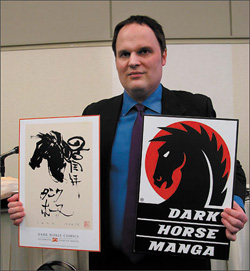 Carl Horn (CH): One major factor is balancing production schedules. We take pride in releasing books that have high-quality design and art reproduction (this can be surprisingly tricky with manga), but this takes time and attention, and with hundreds of different releases overall from Dark Horse each year we try to make sure one month doesn't have a huge number of books whereas another month has very little. But each book is different, of course. When it comes to Japanese books, a new volume of a long-running manga, an omnibus collection of an older manga, and an artbook are three different kinds of projects.
Carl Horn (CH): One major factor is balancing production schedules. We take pride in releasing books that have high-quality design and art reproduction (this can be surprisingly tricky with manga), but this takes time and attention, and with hundreds of different releases overall from Dark Horse each year we try to make sure one month doesn't have a huge number of books whereas another month has very little. But each book is different, of course. When it comes to Japanese books, a new volume of a long-running manga, an omnibus collection of an older manga, and an artbook are three different kinds of projects.
They differ in things such as page count, color content, and the amount of design work that will have to go into each of them. So in balancing our 2014 releases (or those of any other year) we have to do more than just count the number of books; we need to consider what each book requires. Each of our books, whether from Japan or anywhere else, is an individual.
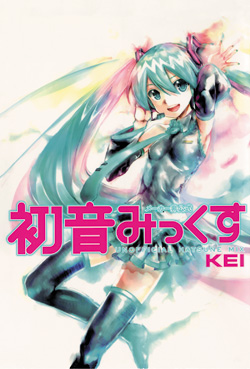 P: The Hatsune Miku: Unofficial Hatsune Mix trade paperback collects the exploits of the fan-favorite “Vocaloid” pop star and her friends. Is this the first English language collection of Hatsune Miku manga?
P: The Hatsune Miku: Unofficial Hatsune Mix trade paperback collects the exploits of the fan-favorite “Vocaloid” pop star and her friends. Is this the first English language collection of Hatsune Miku manga?
CH: Yes, I believe it's the first licensed edition, and we are very pleased to be bringing this popular characters to Western audiences.
P: Manga artist Kei Garo was fundamental in the creation of Hatsune Miku, designing her unique look. Was he at all involved in the development of this collection?
CH: All the way through! On a visual level, Hatsune Miku: Unofficial Hatsune Mix will resemble some of our recent CLAMP omnibus books like Cardcaptor Sakura or Tokyo Babylon. That is, it'll have the same kind of page size and high-quality stock and, just like those CLAMP books, it'll be a mix of black-and-white manga story with occasional color story pages and many bonus color illustrations. All of the art and story was done by Kei, and one thing I like about it is how Kei reminds us in many of the stories that while Miku is a global superstar, she also has roots and a home town. That's Sapporo — the main city on Japan's northernmost island, Hokkaido — where Crypton Future Media, the producer of the Vocaloid software, is located. You know, so much of the media industry in Japan is Tokyo-centered that I like it when an artist reps a local region instead, and the creative ideas that are coming out of there.
P:Kei’s original manga was serialized in Japan between 2008 and 2010. Are there plans for more Hatsune Miku stories in our future beyond this omnibus collection?
CH: We'll have to see! But Miku is all about the future!
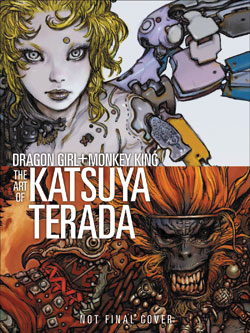 P: Another big release by Dark Horse this month is the art book, Dragon Girl and Monkey King: The Art of Katsuya Terada. How much of this material is new, at least to North American fans?
P: Another big release by Dark Horse this month is the art book, Dragon Girl and Monkey King: The Art of Katsuya Terada. How much of this material is new, at least to North American fans?
CH: This is the first art book on Terada to be released by a North American publisher, so much or all of it may be new to NA fans. We make a point of including artwork from Terada's best-known projects here, such as Blood: The Last Vampire and Katsuya Terada's The Monkey King, but even with those works, there were several illustrations that were new to me. The vast majority of the 200-plus illustrations are from works or editions that haven't been published in North America, and the book aims to put many of them into context. In addition to an interview with Terada where we ask about various pieces, there's a whole section where the artist comments on individual works. As editor, I then expanded on his comments to fill out the background.
For example, one of the illos. is a piece Terada did for the Japanese launch of one of the Assassin's Creed games. It was part of a gallery show to which a number of top Japanese artists contributed, and I sort of act as a reporter after the fact, letting the reader know where it took place and who else exhibited. Terada is the most sought-after commercial illustrator working in Japan today, and if you wanted to follow all his work you'd have to constantly be doing things such as: go to a concert (because he did the promo art), buy CDs (because he drew the cover), attend plays (because he painted the poster), visit a gallery (because he exhibited there), etc., etc.
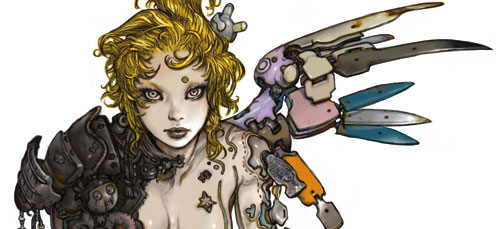 |
These are all actual examples of his art in the book, and as editor, I try to take you along to these places in a virtual sense. His beautiful artwork speaks for itself, but my hope is that you'll enjoy it even more if you know the how and why behind the illustrations.
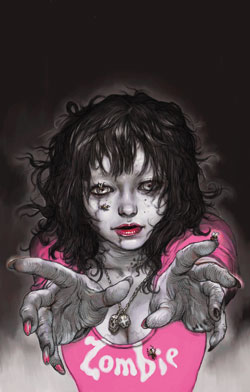 Guillermo del Toro wrote the introduction to Dragon Girl and Monkey King. People like him, people like Katsuhiro Otomo, Mamoru Oshii, Moyoco Anno — amazing creators like these are Terada's fans. He's an "artist's artist," the artist other artists admire. The stories behind these illustrations give you a glimpse into the larger art and publishing scene in Japan that's an inspiration to so many of us. Hopefully you'll come away also knowing about new creators, new titles, and the connections between them. They all make up the dynamic world that Terada works in.
Guillermo del Toro wrote the introduction to Dragon Girl and Monkey King. People like him, people like Katsuhiro Otomo, Mamoru Oshii, Moyoco Anno — amazing creators like these are Terada's fans. He's an "artist's artist," the artist other artists admire. The stories behind these illustrations give you a glimpse into the larger art and publishing scene in Japan that's an inspiration to so many of us. Hopefully you'll come away also knowing about new creators, new titles, and the connections between them. They all make up the dynamic world that Terada works in.
P: Terada’s artwork doesn’t appear to exist at the same level as your typical manga art, instead looking as if it shares a greater kinship with the works of European graphic novelists like Moebius, Bilal and others. Does he count them as kindred spirits, influences, or a little of both?
CH: This is actually a question we get into with the artist in the book, and we talk specifically about Moebius and Bilal. So… buy the book if you want to find out!
P: Dark Horse continues to release some of the most popular manga series available, including Neon Genesis Evangelion, Vampire Hunter D, Gantz, MPD-Psycho, and Lone Wolf and Cub to name but a few. Can you tease our readers with any upcoming series they may not know about yet?
CH: We’ve got some great stuff coming up in 2014. Look for us to announce some new titles this spring!




